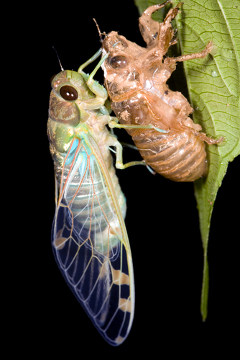When we think of a skeleton, we immediately imagine our own, which is located internally in our body. This type of skeleton is called a endoskeleton and is found in vertebrates such as fish, amphibians, reptiles, birds and mammals. However, there are animals that have the skeleton outside the body, the so-called exoskeleton.
Unlike ours, the exoskeleton is actually a tough layer that covers the body of some invertebrates and is not made up of bones. The best known type is the one present in the arthropods, such as spiders, scorpions and crabs. In these animals, the structure is mainly composed of chitin, a resistant polysaccharide. In crustaceans, such as lobsters and crabs, the exoskeleton is even more rigid, as it has, in addition to chitin, calcium salts.
You might be wondering how these animals grow, since they have a kind of armor that protects them. Growth occurs through the call changes or ecdysis, in which the animal literally switches exoskeleton.
During molting, the arthropod leaves the interior of its old skeleton and already presents an exoskeleton in formation. This, however, is relatively fragile and allows an expansion of the animal's body before it hardens. The cicada in the figure below is changing its exoskeleton, note:

Note the ancient cicada exoskeleton on the leaf
In addition to arthropods, corals also have an exoskeleton. In these animals, it is formed by a crystalline form of calcium carbonate, known as aragonite, which is continuously precipitated by them. The exoskeleton then grows vertically, forming the great reefs.
Some molluscs they also feature a hard shell-shaped exoskeleton that helps protect their soft body. These shells are mainly formed by calcium carbonate, thus ensuring the rigidity of this structure.
It is important to highlight that both the internal and external skeleton are essential for the survival of these animals, as they allow the support of the body, the protection of some internal structures and, in some species, they protect against the action of predators.
Now that you've learned what an exoskeleton is, would you know how to say other examples of animals, in addition to those mentioned in the text, that have this structure? Respond in the comments!
By Ma. Vanessa dos Santos

